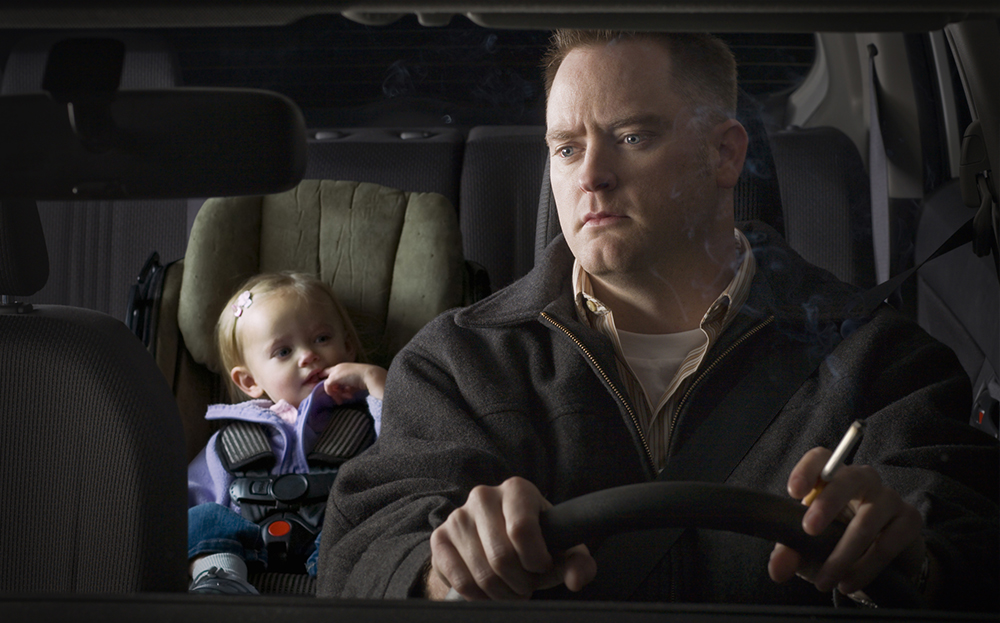News: UK steps closer to ban on smoking in cars carrying children
Law due to come into force later this year.

THE GOVERNMENT has explained how the forthcoming law banning smoking in cars carrying a child under the age of 18 would work in new draft legislation, and put it out for consultation.
The legislation banning smoking in cars carrying young passengers was passed in February as part of the Children and Families Act but this so-called “secondary legislation” marks the latest step towards making it law. According to the Department of Health the consultation could be concluded in a matter of weeks, with the law due to come into force later this year.
Like similar laws concerning driver behaviour, the anti-smoking law would be enforced with a £50 on-the-spot fixed penalty notice. If the penalty was challenged it could go to court where the driver could face a fine of up to £10,000 for preventing a passenger from lighting up. The passenger themselves might be fined £800.
If the penalty was challenged it could go to court where the driver could face a fine of up to £10,000
Campaigners, including the British Lung Foundation, say that the measure could save lives by preventing passive smoking. However, the ban has been criticised by smokers’ groups which believe that banning smoking in private cars is both an unnecessary red tape and an unacceptable infringement on the rights of smokers.
Speaking in May 2103, Simon Clark, director of the smokers’ group Forest, said: “We don’t encourage adults to smoke in cars carrying children but legislation is disproportionate to the problem.
“Most smokers are sensible enough to know that lighting up in a car with children is inconsiderate at best and research suggests that only a tiny minority still do it. Education has to be better than yet another law that would be very difficult to enforce.”
He added: “A ban on smoking in private vehicles would represent a major intrusion into people’s private lives. What next: a ban on smoking in the home if children are present?”
The new law will be followed in March 2015 by a new offence of driving with certain controlled drugs above specified limits. It will work alongside the existing offence of driving while impaired through drink or drugs. The limits will be extremely low – one smoke of cannabis will put a driver over the legal limit.
Meanwhile, following consultation, the drink-drive law is to be amended so that drivers who are breath tested and found to have between 36 and 50 microgrammes of alcohol per 100ml of breath can no longer choose to go to a police station to have a blood sample taken.
The police argued that a health professional was often not at hand to take the sample and that by the time they were, in up to 25% of cases the driver’s alcohol limit had fallen to below the prescribed limit.
The government has accepted that roadside testing machines are now highly accurate and will remove this entitlement next year.
In January, Driving took to the streets to find out what members of the public thought about smoking in cars carrying children – see what people thought in this video:
Notable driving laws – a timeline
1865 The “red flag act” set a speed limit of 4mph in the country and 2mph in towns, and required a man with a red flag or lantern to walk 60 yards ahead of each vehicle.
1896 Speed limits raised to 14mph and the requirement for an escort removed.
1903 Driving licences introduced as a means of identifying vehicles and their drivers. Speed limits raised to 20mph.
1931 Speed limits for cars and motorcycles abolished, alongside introduction of the Highway Code. In the first edition, drivers were advised to sound their horn when overtaking, and there was no mention of mirrors.
1934 Voluntary driving test introduced.
1935 Speed limit of 30mph in “built-up areas” (defined as having street lighting) introduced.
1935 After June 1 that year all people who had started to drive on or after April 1 the previous year were required to have passed the driving test.
1965 Trial speed limit of 70mph, or 30mph on stretches affected by fog, ice or snow introduced on previously unrestricted roads, including motorways.
1966 Blood alcohol limit for drivers introduced.
1967 Permanent maximum speed limit of 60mph for all roads, and 70mph for motorways becomes law.
1983 Seat belts made compulsory for drivers and front passengers as evidence suggested six out of 10 drivers ignored advice to belt up in the front. The Department for Transport aimed to save the lives of 1,000 people a year with the new legislation.
1991 Seat belts made compulsory for rear passengers.
1996 Written theory tests introduced.
2000 Computer-based theory tests introduced.
2002 Hazard perception video test introduced.
2007 Hand-held mobile phone use banned.
Click here to search for used cars on driving.co.uk




